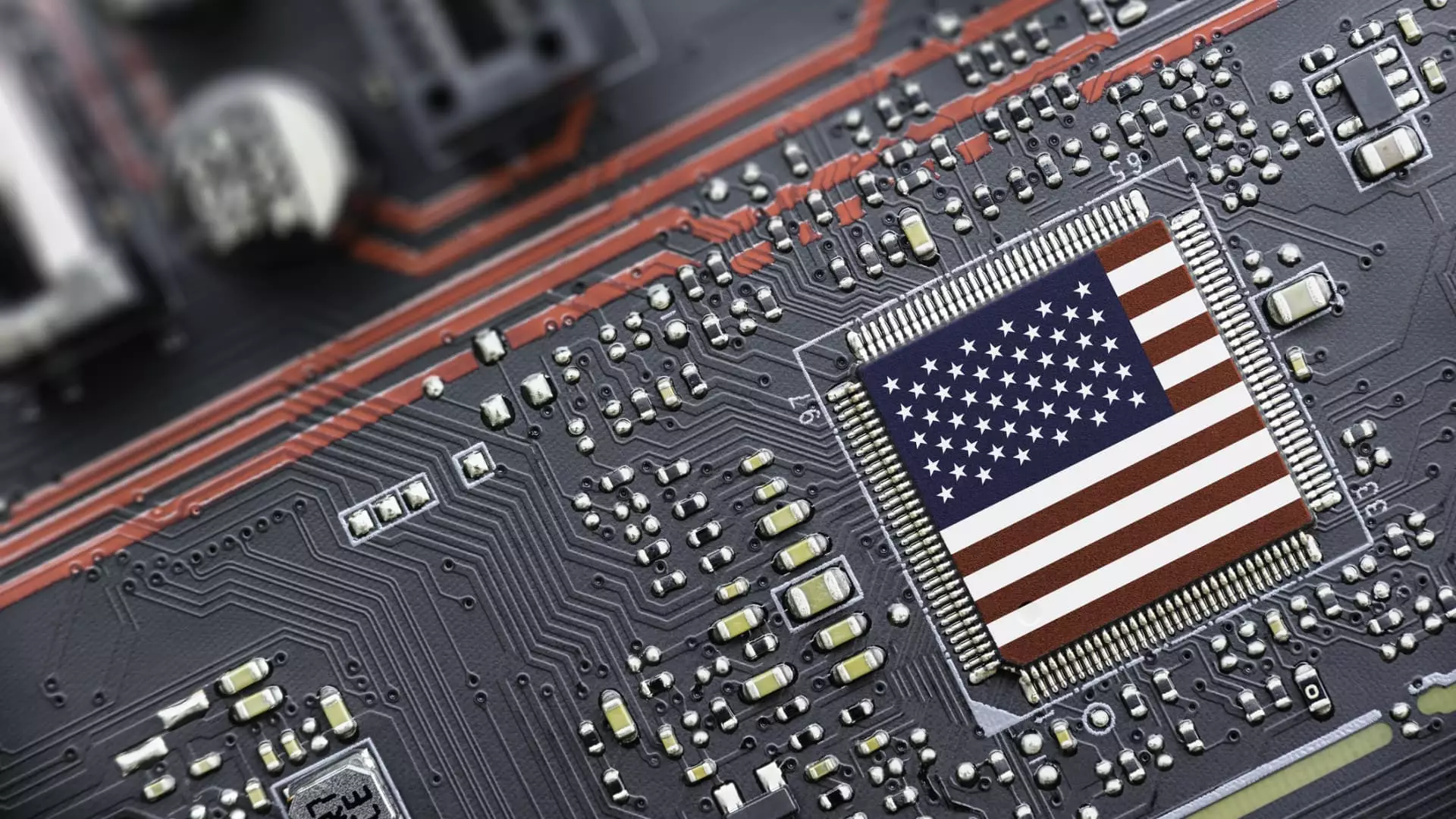Recent developments in the semiconductor sector have sent stocks into a tailspin, leaving many investors perplexed. Just when it seemed like there was a glimmer of hope with the Trump administration’s announcement exempting semiconductors from initially proposed tariffs, reality dampened the optimism. The market’s immediate backlash signifies a profound misunderstanding of the complexities at play. Simply put, investors are skeptical because the exemption isn’t an outright removal of impending tariffs on semiconductors. The announcement feels more like superficial assuagement, rather than a substantive change in policy.
While the promise of tax relief might lead some to anticipate a market surge, the harsh truth is that the tariffs targeting the semiconductor industry are far from resolved. In fact, it seems they’re only postponed—an uncomfortable reality that investors are not willing to ignore. As stocks for major players like Nvidia and Micron plummeted—Nvidia alone down nearly 24% year-to-date—the market reflects a fear that any temporary relief is just a mask for deeper economic vulnerabilities and impending financial consequences.
The Demand Dilemma
Another critical factor contributing to the semiconductor stocks’ decline is the looming danger of demand insufficiency. Semiconductors are typically embedded in finished products, from smartphones to laptops, and new tariffs are set to hit imported goods at rates nearing 40%. With the expected ripple effects of such drastic hikes, consumer purchasing habits are likely to be profoundly affected. A staggering nearly $200 billion in computing equipment faces significant price hikes, which could considerably stifle demand.
This combination of rising prices and potential tariffs could lead to a consumer backlash, disproportionately impacting the sector that was once seen as recession-proof. The market’s seemingly exaggerated response might be rooted in an astute understanding that, as prices rise, demand inevitably dictates a downward trend in sales—a situation that could spiral into a catastrophic demand collapse.
Strategic Complications for Key Players
Companies like TSMC, which rely heavily on U.S. consumers, find themselves at a crossroads. With approximately 70% of its sales derived from the U.S. market, TSMC could try to navigate the choppy waters of international trade by rerouting shipments through regions with lower tariffs. But this “solution” is akin to applying a Band-Aid on a fundamentally broken financial construct. The deeper issue remains—this is not only a logistical challenge but a reflection of an unstable market propelled by governmental uncertainty.
Moreover, firms like Nvidia are caught in a precarious web of their own making, with Chinese tech giants desperately stocking up on H20 AI chips to mitigate prospective restrictions. This creates an agonizing balancing act for Nvidia—ramping up production for one market while trying to predict and prepare for eventual export limitations in the other. This uphill struggle does not inspire confidence for either the firms involved or their investors.
AI Demand Under Scrutiny
The clouds are darkening over the AI sector as companies like Microsoft deliberate on halting various data center projects globally—a move that reverberates throughout the entire tech landscape. As CoreWeave’s stock decline indicates, these shifts present a fundamental question: what is the future demand for AI services? Once seen as the bedrock of explosive sector growth, the prospect of delays and suspensions shrouds AI initiatives in uncertainty.
While it’s true that domestic manufacturers like Intel could potentially benefit as production returns to U.S. soil, short-term market reactions suggest that the overarching concerns regarding demand are far more pressing. Protectionist policies may not provide the anticipated benefits and could instead backfire, leading to a myriad of unforeseen economic consequences.
The semiconductor industry, once gleaming with potential, now faces turbulent uncertainties fueled by policy shifts and market anxieties. The fallout cascades beyond numbers and stock charts, striking at the core of consumer confidence while raising larger questions about the sector’s viability in an unstable economic ecosystem.

